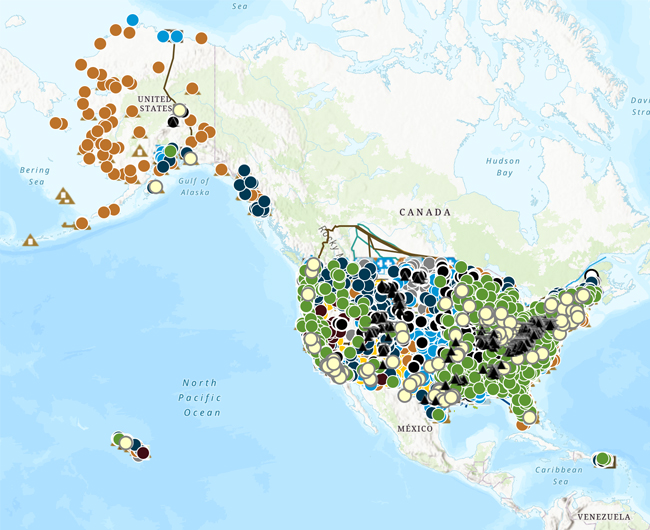Profile Overview
U.S Energy Atlas with total energy layers
 View the interactive map
View the interactive map Quick Facts
- In 2023, hydroelectric power accounted for 42% of Oregon's total electricity net generation, and all renewable sources combined produced 62% of the state's total electricity net generation.
- In 2023, wind energy produced 15% of Oregon's total electricity net generation and the state had almost 4,000 megawatts of installed wind-powered generating capacity.
- Oregon is a partner in the West Coast Electric Highway along with California, Washington, and British Columbia, Canada. As of February 2024, there were more than 1,200 electric vehicle charging stations with a total of more than 3,200 charging ports in service across Oregon.
- Oregon receives more than 90% of the refined petroleum products it uses from the Puget Sound refineries in Washington. Those petroleum products, most of which are transportation fuels, arrive by way of the Olympic Pipeline and by barge at Portland-area terminals.
- Oregon has the only natural gas field in the Pacific Northwest—the Mist field of northwestern Oregon, discovered in 1979. The field no longer has any significant natural gas reserves or production, and it is used primarily for natural gas storage.
Last Updated: April 18, 2024
